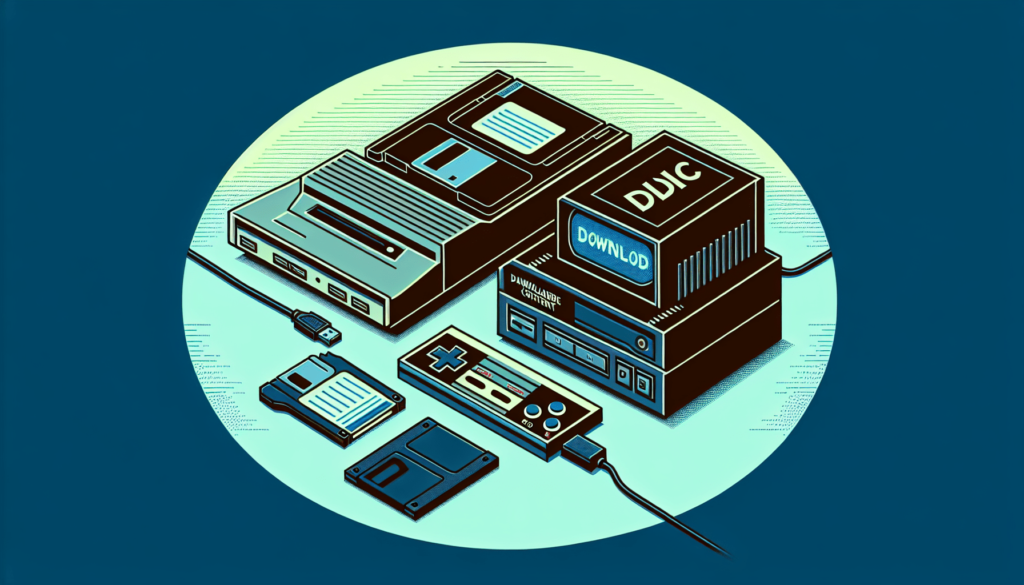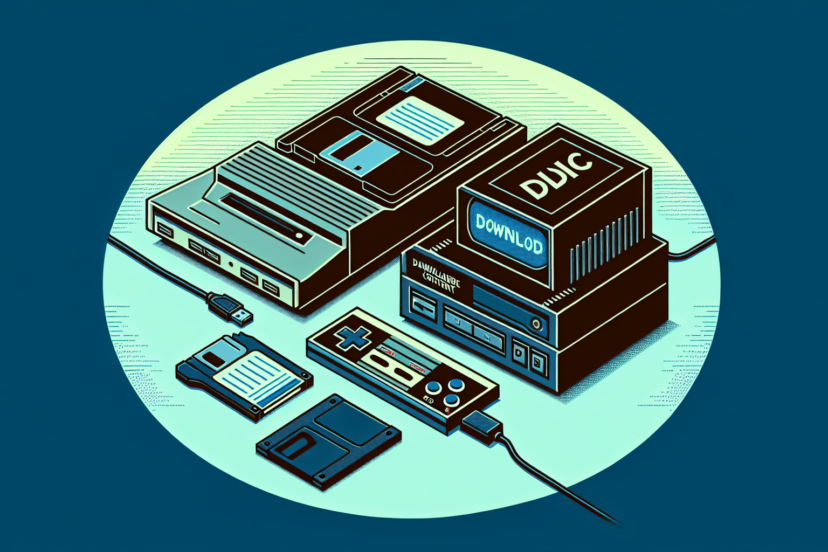What Was The First Video Game To Feature Downloadable Content (DLC)?
You’re about to take a fascinating dive into the origins of downloadable content in video gaming history. “What Was The First Video Game To Feature Downloadable Content (DLC)” uncovers the revolutionary game that paved the way for the DLC landscape we know today. This article takes you back to the early days of gaming and highlights the innovative milestone when a game first offered gamers the opportunity to expand their virtual worlds beyond the initial purchase. Get ready to explore the moment that forever changed how you experience and interact with your favorite games! Have you ever wondered what was the first video game to feature downloadable content (DLC)? This question leads us down an interesting path in the history of video gaming, exploring how technology and the gaming industry have evolved over the years.

The Concept of Downloadable Content
Long before the internet became a staple in every household, the concept of adding additional content to an already released video game was more of a dream than a reality. In the early days, game developers primarily relied on physical media like cartridges and discs to distribute their games. Updating or adding new features post-release was not feasible due to these limitations.
The Birth of DLC
The advent of the internet changed everything. With the increase in internet connectivity, game developers started exploring new ways to engage players beyond the initial game purchase. Enter downloadable content (DLC) — additional content that players could download from the internet, thereby enhancing their gaming experience.
The First Video Game to Feature DLC
When we talk about the first video game to feature downloadable content, it’s essential to distinguish between the various forms of early DLC. Some primitive forms of content were available even before the modern interpretation of DLC.
The Modem Connection Era
One of the earliest examples of game content being delivered over a modem connection dates back to the early 1980s. The Atari 2600 and its game “Adventure” had a famous Easter egg, but it wasn’t until games like “Intellivision’s PlayCable” in 1981 that downloading additional content started becoming more mainstream.
PlayCable Downloadable Games
| Year | Console | Game |
|---|---|---|
| 1981 | Intellivision | Various |
This service allowed users to download games to their Intellivision consoles using cable television signals. Although PlayCable wasn’t purely internet-based, it laid the groundwork for future downloadable content distribution methods.
DLC in the Internet Age
However, the true age of internet-based DLC began in the mid-1990s. One of the hallmark games of this era that introduced the concept of modern DLC was “Sega Channel” for the Sega Genesis, which debuted in 1994. This service allowed players to download games, tips, and demos directly to their console over a cable connection.
The Impact of Sega Channel
Sega Channel was indeed a pioneer, as it introduced the idea of improving and expanding games post-release. Here’s a glimpse at how Sega Channel changed the gaming landscape:
Sega Channel Highlights
| Feature | Description |
|---|---|
| Downloadable Games | Access to a rotating roster of 50 games every month. |
| Game Previews/Demos | Ability to try games before deciding to purchase them. |
| Cheats and Tips | Access to in-game hints and cheat codes. |
Sega Channel’s innovative approach set the groundwork for the DLC model we are familiar with today.
The Rise of PC-Based DLC
As personal computers gained popularity, developers began taking advantage of the platform’s flexibility to offer downloadable content. The game “Total Annihilation,” released in 1997, is often credited as one of the first PC games to offer downloadable content on a monthly basis.
Total Annihilation’s DLC Model
“Total Annihilation” offered new units and maps as downloadable content through their official website. This regular stream of content kept players engaged long after the game’s initial release.
Total Annihilation DLC Details
| Type of Content | Availability |
|---|---|
| New Units | Monthly basis |
| New Maps | Official website |
This model proved successful and laid the foundation for future PC games and how they handled post-launch content.
Console-Based DLC Evolution
While the PC was pioneering downloadable content, consoles were not far behind. The Dreamcast, released by Sega in 1999, had a built-in modem and even an optional broadband adapter, pushing the boundaries of what could be done with downloadable content.
The Dreamcast’s Role in DLC History
Dreamcast’s online capabilities enabled games like “Phantasy Star Online” to offer additional quests and items post-launch. This further cemented the idea that downloadable content could provide ongoing value and engagement for players.
The Modern Era of DLC
The release of sixth-generation consoles such as the PlayStation 2 and Xbox marked the beginning of the modern era of downloadable content. Microsoft’s Xbox Live service, launched in 2002, revolutionized how players accessed DLC.
Xbox Live and the Evolution of DLC
Microsoft’s Xbox Live service enabled gamers to download patches, additional content, and even digital games directly to their console. Popular games like “Halo 2” utilized Xbox Live to offer map packs, which players could purchase and download.
Halo 2 DLC Example
| Content Type | Description |
|---|---|
| Map Packs | Additional multiplayer maps |
| Game Patches | Updates fixing bugs and exploits |
This method of delivering content became the industry standard and remains so to this day.
The Importance of DLC in Today’s Gaming Industry
Downloadable content has become an integral part of the video gaming industry. Today, almost every major release comes with some form of DLC, whether it be expansion packs, cosmetic items, or additional story content.
Benefits of DLC for Players and Developers
For players, DLC offers the opportunity to experience new content and extend the life of a game they love. For developers, it provides an additional revenue stream and a way to keep their player base engaged.
Benefits of DLC
| For Players | For Developers |
|---|---|
| Extended Game Life | Additional Revenue Streams |
| New and Exciting Content | Sustained Player Engagement |
| Customization Options | Market Testing for New Ideas |
The ability to add content post-launch has fundamentally changed how games are developed, marketed, and maintained.
Conclusion
The first video game to feature downloadable content is not a straightforward question to answer. Various forms of DLC have evolved over the years, from the early days of modem connections with PlayCable and Sega Channel to the comprehensive online services provided by modern consoles and PCs. Each step along the way has contributed to the rich tapestry of what we now consider DLC.
So, the next time you download a new map pack or a character skin, take a moment to appreciate the long journey that got us here. After all, it’s a testament to the continuous innovation and evolution within the video gaming industry.




